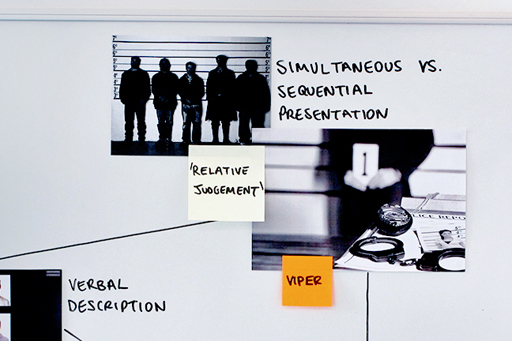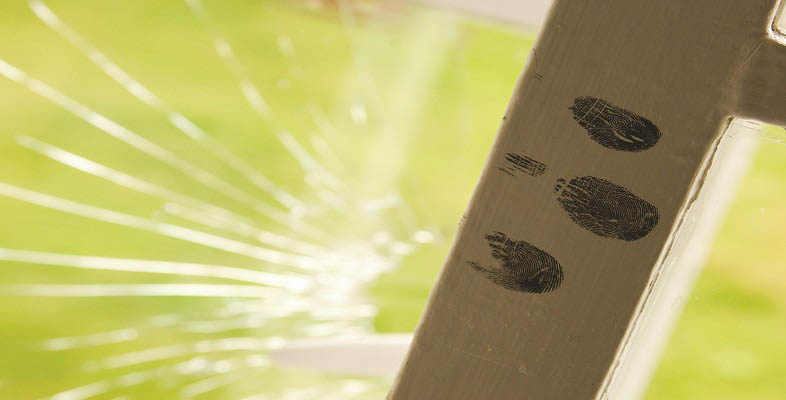1.1 Simultaneous vs sequential presentation

The second factor in the accuracy of identifications is based on psychological studies that have compared a sequential procedure for presenting the line-up members – where the witness looks at each member of the parade one at a time – with the more traditional simultaneous line-up method where all members of the parade are seen together.
In exploring the psychology of identification parades, researchers are careful to use parades that contain an image of the perpetrator (known as ‘target-present’ parades) and parades that do not (known as ‘target-absent’ parades). It is important to use target-absent parades to simulate a situation in which the police are investigating an innocent suspect. If you think about it, if the suspect is innocent then the identification parade will not contain an image of the perpetrator.
Results have revealed that if the target is not in the parade, participants tend to be more likely to identify a foil (a member of the parade who is not the suspect) when a simultaneous line-up procedure is used than when a sequential procedure is used (Cutler and Penrod, 1995). A possible explanation for this is that seeing all the faces at once allows you to make a ‘relative judgement’, in other words to compare the faces and select the image which is the best match to your memory of the perpetrator.
Having selected the best match, there is then a tendency to identify that person, even if they are not a particularly good match to the perpetrator. Displaying the faces one at a time makes it much more difficult for witnesses to compare faces and therefore limits the extent to which they can make a relative judgement. Instead, witnesses have to make an absolute judgement about each face when seeing a sequential presentation. That is, they have to decide whether each face is that of the perpetrator without comparing it to others.
Although research has shown that sequential presentation can reduce the number of misidentifications made, there is some evidence that a simultaneous presentation might lead to both a higher rate of misidentifications and of identifications of the guilty person (Steblay, Dysart and Wells, 2011). In other words, compared to a sequential presentation, showing all the images simultaneously makes it more likely that a witness will identify someone regardless of whether the perpetrator is in the parade or not.
The video parade systems used in the UK – such as the Video Identification Parade Electronic Recording (VIPER) system – involve a sequential presentation. Some states in the USA are beginning to show photos sequentially, but many still show all the photos together.
